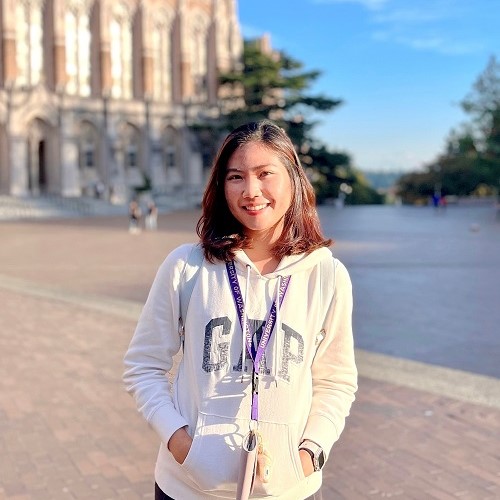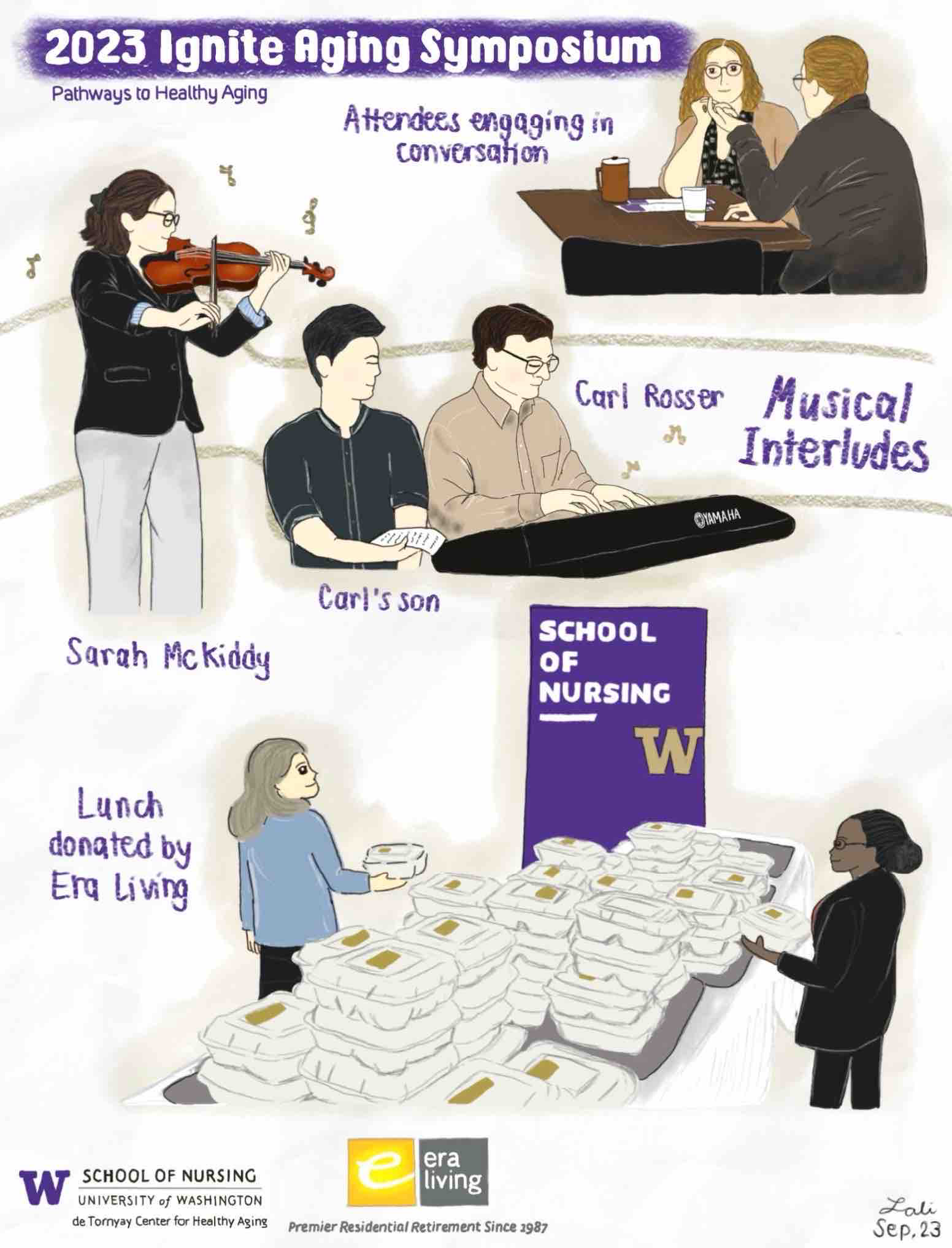 Lalipat Phianhasin, MS, RN, AGPCNP-BC is a second-year Ph.D. in Nursing Science student and the de Tornyay Center for Healthy Aging illustrator. Her faculty mentor is Dr. Eeeseung Byun. Her area of interest centers around social factors related to stroke survivors’ quality of life.
Lalipat Phianhasin, MS, RN, AGPCNP-BC is a second-year Ph.D. in Nursing Science student and the de Tornyay Center for Healthy Aging illustrator. Her faculty mentor is Dr. Eeeseung Byun. Her area of interest centers around social factors related to stroke survivors’ quality of life.
What interested you about stroke research?
I have a clinical background working with stroke patients, especially in the acute phase. My research will center around stroke survivors because, based on my experience, I know that most of them have a disability after a stroke. But health care providers mostly focus on the acute phase. What about their recovery? How are they going to go back to what important to them.
Why did you choose nursing?
It’s a long story. Members of my family are healthcare providers. My grandfather had to have long-term care. Instead of being hospitalized, we took care of him at home. So, our home was like a small primary care hospital. It was very holistic care as well because he had a tracheotomy tube, and we had to give him oxygen, he also had a gastronomy tube where we fed him through a stoma. Nursing care was really familiar to me when I was a child, and that really inspired me to take care of him and also other people as well.
What made you want to go into nursing research?
It happened when I was a nursing student and when I took care of the patients in the unit, supervised by my professor. We had a class about research applications for the patient and in the clinical practice. The professor always encouraged us to apply the articles by writing a care plan. That was very interesting to me, how research could help improve their quality of life.
Then, after I was interested in research, I felt like we could create our own research based on our specific site, specific population, because not all research is going to be applicable in all settings. We could publish our knowledge and our findings as well.
Then I found a way I could be a researcher, which is to pursue a PhD.
You wrote an editorial a little while ago about the unconscious patients and their environment. Could you briefly describe the topic of the editorial?

The article I wrote is how we should be aware of patients who are unconscious. They can still perceive the environment, even though they cannot respond to us. I just wanted to echo that message, please be aware of that, and value them and treat them and respect them as a human.
Why did you think it was important to write the article?
I feel like sometimes health care providers, we don’t realize that. Maybe because they have seen a lot of patients like this. I think it would be great if we can create a guideline where, if we have patients who are unconscious, just let them know and explain, our plan of care.
What is your background and history with art?
When I was a child in elementary school, I loved drawing. I loved painting and all kinds of art, but I loved drawing and painting specifically. My family knew that I loved it, and they sent me to take a course. They wanted me to have like another activity that I liked.
What do you like about drawing and painting?

I feel like it’s freedom, it’s a kind of freedom. You can create without boundaries, because sometimes in in everyday life, you can do this, you cannot do this, based on social norm of things, especially in my country. They’re very conservative sometimes.
But the art, drawing and painting, is a kind of way that we can express our emotion. We can express everything without harm to others.
Is there any connection between your art, nursing and research for you?
I feel like nursing is art and science. Art has a broad definition. To me, I feel like the skill in in my art supports skill in nursing and research as well. Because every time when I would like to draw, I have to plan and organize and I am a visual person. Before I draw something, I will have a picture in my head. I feel like it trains me to think in this way. This kind of process can apply to nursing and doing research to plan and prepare for the next step of what I am going to do both in clinical practice and nursing research.
What aspects of nursing are more of an art to you?
It’s the art of communication. We have to build trust, and that’s where you need the art of communication. And I think we can gain valuable information that sometimes is very little, but it’s significant to our patient’s improvement.